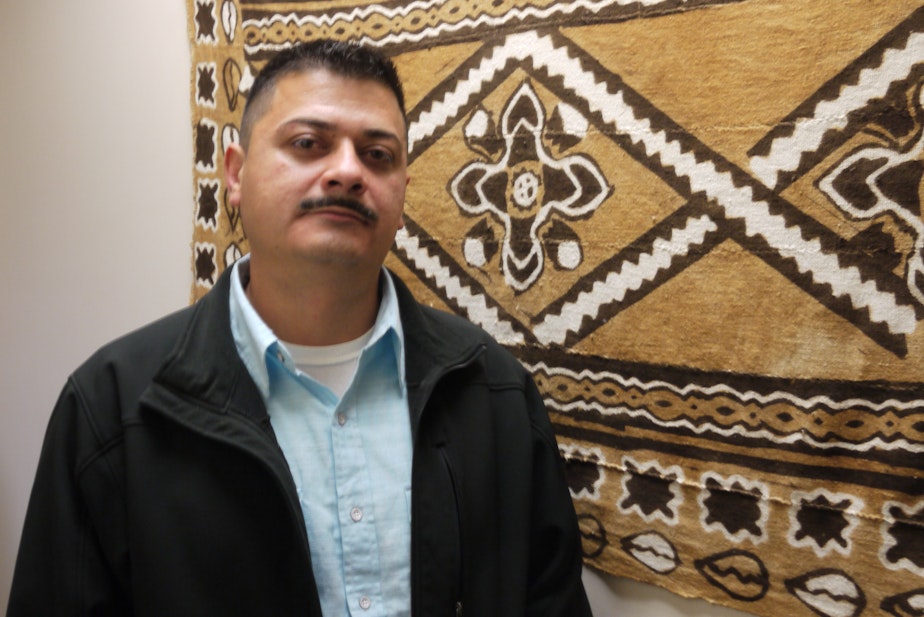Lawsuit Claims ICE Attorney Manufactured Evidence In Seattle Deportation Case

A federal lawsuit filed in Seattle Thursday highlights alleged document tampering in immigration cases. The lawsuit claims that government officials forged documents in a local deportation case, and attorneys who filed the case are calling for a broad investigation.
For nearly six years, Seattle resident Ignacio Lanuza fought his deportation case. He said he kept fighting because he’s lived here 14 years, he’s married to a U.S. citizen and he has two sons born here.
He nearly lost all that when a judge ordered that he be deported back to Mexico. Lanuza unlawfully crossed the border in 1996.
Facing deportation, Lanuza took his case to a new immigration attorney, who noticed something peculiar in his file.
“It’s amazing and shocking how blatant of a forgery it is,” said Matt Adams, an attorney with The Northwest Immigrant Rights Project who is representing Lanuza.
It was actually a previous immigration attorney, Hilary Han, who discovered the questionable document. It’s a standard form called an I-826 that lays out some rights, and it’s a pivotal piece of evidence the government relied on to prosecute Lanuza’s case.
The form was submitted to an immigration judge by the government attorney named in the lawsuit, Jonathan Love, assistant chief counsel for Immigration and Customs Enforcement in Seattle.
“If you look carefully at the document, you can also see that it appears to have been just a blatant whiteout job with both dates and the names that placed on it,” Adams said.
It gets even messier. The I-826 form bears the name "Department of Homeland Security" across the top. The ICE attorney, Jonathan Love, signed and dated the form with the year 2000. But the Department of Homeland Security did not exist in 2000. It was formed in 2002, in response to the 9/11 attacks.
The I-826 form was crucial to Lanuza’s case because it indicated whether he’d lived in the U.S. continuously for 10 years, making him eligible to apply for a green card. If Lanuza had, in fact, signed the form in 2000, that legal option was off the table.
After discovering the forgery, the Board of Immigration Appeals reopened Lanuza’s case. The board described the form as containing “anachronisms and other hallmarks which may suggest document tampering.”
Adams said the government did not contest it.
“My first reaction to the forgery? It was happiness,” Lanuza said. “There was finally some hope.”
But now, it gives him pause to wonder how many other people has this happened to.
Lanuza’s attorneys have also filed complaints with the Department of Homeland Security and the Department of Justice, calling for a full investigation of Love’s cases.
"This case demonstrates a level of impunity by an ICE official that is quite shocking," said Adams. "We are deeply concerned that this incident may well indicate a broader pattern of unlawful conduct.”
Andrew Muñoz, spokesman for ICE in Seattle, said they’ve launched an internal review and take all allegations of misconduct seriously.
“Any unlawful conduct by U.S. Immigration and Customs Enforcement’s employees is inconsistent with our agency values and the high standards to which we hold our employees,” Muñoz said in a written statement.
The lawsuit filed Thursday also seeks $500,000 for Lanuza, who’s now a legal U.S. resident. Lanuza said the money will help recoup years’ worth of legal fees, lost wages and other hardships for his family.

